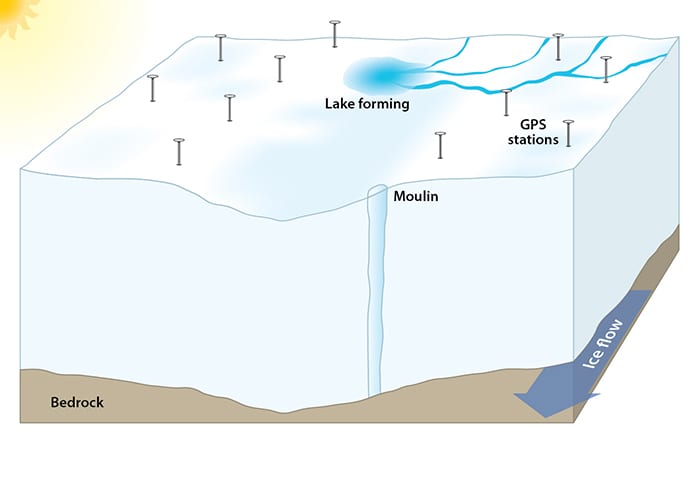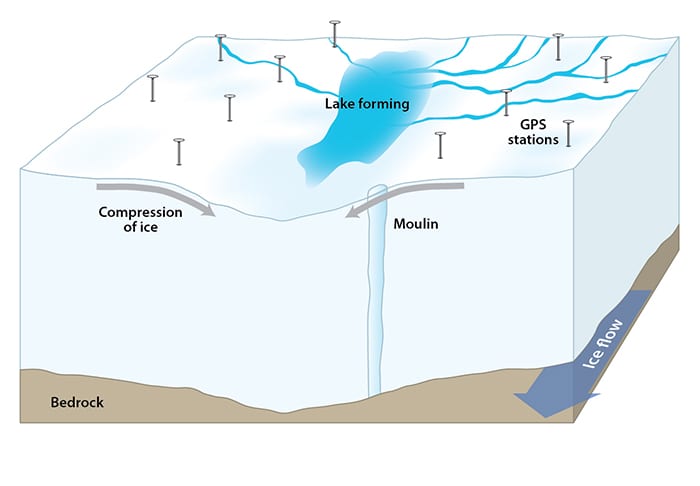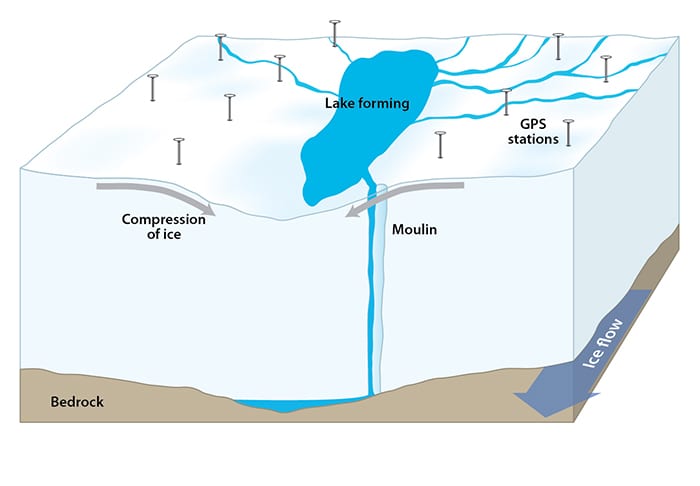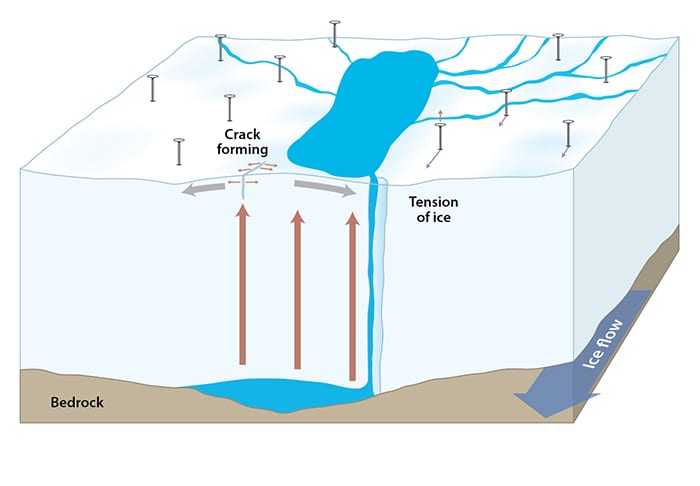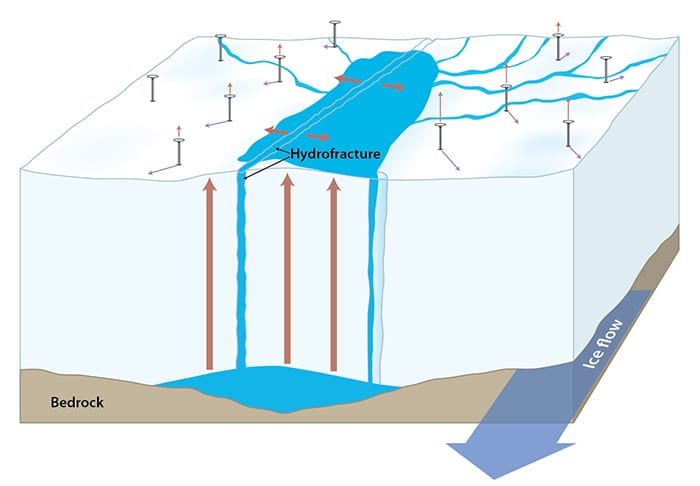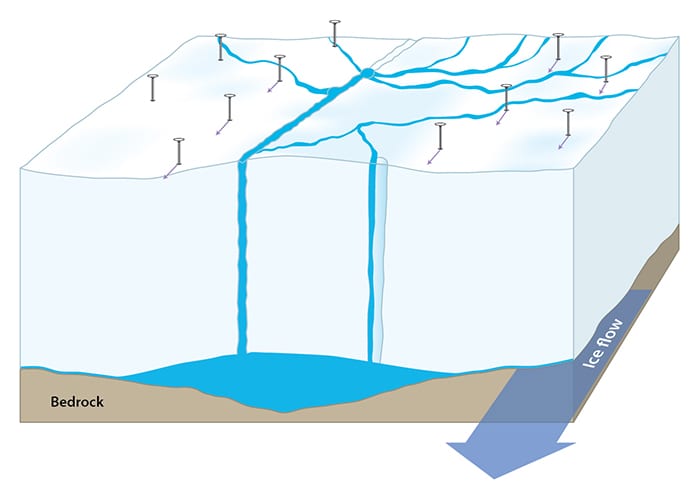Triggering Hydrofractures
TOPICS: Sea Level Rise / Glaciers & Ice Sheets
Image and Visual Licensing
WHOI copyright digital assets (stills and video) contained on this website can be licensed for non-commercial use upon request and approval. Please contact WHOI Digital Assets at images@whoi.edu or (508) 289-2647.

